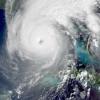Climate & Environment
 Learn from panelists at the upcoming Right Here, Right Now Global Climate Summit on how the law can be used to address the negative impacts of climate change on human rights around the world.
Learn from panelists at the upcoming Right Here, Right Now Global Climate Summit on how the law can be used to address the negative impacts of climate change on human rights around the world. Assistant Professor Matt Burgess discusses the political polarization of climate change and efforts to reduce it, as voters cast their ballots in the midterm elections.
Assistant Professor Matt Burgess discusses the political polarization of climate change and efforts to reduce it, as voters cast their ballots in the midterm elections. A $3 million grant from the National Science Foundation will allow CU Boulder researchers to better understand how complex species interactions affect natural ecosystems.
A $3 million grant from the National Science Foundation will allow CU Boulder researchers to better understand how complex species interactions affect natural ecosystems. A new study shows that hybrids between black-capped and mountain chickadees are more likely to be found in places where humans have altered the landscape in some way.
A new study shows that hybrids between black-capped and mountain chickadees are more likely to be found in places where humans have altered the landscape in some way. Published only days before the Commission for the Conservation of Antarctic Marine Living Resources' annual meeting, this evidence-based commentary published in Science notes that current levels of fishing, combined with climate change, are taking a concerning toll on this diverse ecosystem of global importance.
Published only days before the Commission for the Conservation of Antarctic Marine Living Resources' annual meeting, this evidence-based commentary published in Science notes that current levels of fishing, combined with climate change, are taking a concerning toll on this diverse ecosystem of global importance. A CU Boulder-led team is pushing for climate scientists to put the more likely and plausible middle-of-the-road scenarios at the research forefront instead of solely the worst-case futures.
A CU Boulder-led team is pushing for climate scientists to put the more likely and plausible middle-of-the-road scenarios at the research forefront instead of solely the worst-case futures. New research shows that a cold equatorial ocean current—which provides a buffer for the Galápagos Islands against an otherwise warming Pacific Ocean—has been getting stronger for decades. It's encouraging news, and another reason to safeguard this UNESCO World Heritage Site.
New research shows that a cold equatorial ocean current—which provides a buffer for the Galápagos Islands against an otherwise warming Pacific Ocean—has been getting stronger for decades. It's encouraging news, and another reason to safeguard this UNESCO World Heritage Site. Two Category 4 hurricanes made landfall on U.S. coastlines within two weeks of each other in September. Kris Karnauskas explains why hurricanes form when they do and why Fiona and Ian may not be the end of this season.
Two Category 4 hurricanes made landfall on U.S. coastlines within two weeks of each other in September. Kris Karnauskas explains why hurricanes form when they do and why Fiona and Ian may not be the end of this season. Five years after Maria, Hurricane Fiona exposes continued problems with Puerto Rico’s infrastructure. Fernando Rosario-Ortiz explains when the power goes out, so does access to clean water.
Five years after Maria, Hurricane Fiona exposes continued problems with Puerto Rico’s infrastructure. Fernando Rosario-Ortiz explains when the power goes out, so does access to clean water. The Department of Energy awarded $400 million for research into clean energy technologies and low-carbon manufacturing through 43 Energy Frontier Research Centers, six of which feature 13 Renewable and Sustainable Energy Institute (RASEI) members.
The Department of Energy awarded $400 million for research into clean energy technologies and low-carbon manufacturing through 43 Energy Frontier Research Centers, six of which feature 13 Renewable and Sustainable Energy Institute (RASEI) members.


